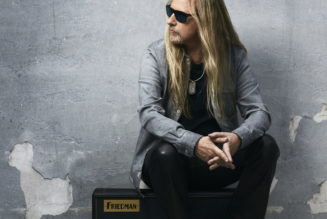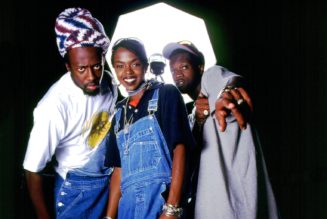Having worked for Daimler AG for 26 years, seven of them as the successful CEO of the company’s in-house hot-rod shop, Mercedes-AMG, it’s fair to say that running storied British sports car brand Aston Martin was not a career move Tobias Moers had ever considered. But when billionaire Canadian businessman Lawrence Stroll—who was assembling a consortium to buy the 16.7 percent stake in the troubled automaker that would make him executive chairman—called Moers in January 2020 to discuss the idea, the German was intrigued.
“How many brands are there that are still independent, where you can create something more sustainable, build something better?” says Moers of Aston Martin, which despite struggling in the aftermath of an unsuccessful IPO in 2017, was still producing fast, good-looking cars with unique character and charisma. “And I thought,’Yeah, why not?’ ”
Moers arrived at Aston headquarters in Gaydon, England, in August of last year. Nine months later, he’s still working 16-hour days—commuting home to Germany on the weekends—to refocus, reinvigorate, and reimagine a company that appeared to have lost its way. He’s strengthened a technology agreement with five-percent shareholder Mercedes-Benz, axed costly plans to internally develop an electric-vehicle platform, put Lagonda’s comeback on ice, and changed the company’s entire manufacturing process to help drive 35 to 45 percent gains in efficiency.
There’s a sharper focus on the cars Aston Martin will be building over the next five to 10 years, too. The two new mid-engine sports cars announced in 2019 are still in the mix, while the DBX SUV lineup will be expanded with the addition of a mild hybrid model later this year and a Lamborghini Urus-fighting high-performance model with at least 650 hp in 2022. By the end of the decade, Aston will also be building high-performance electric vehicles using an EV skateboard architecture sourced from Mercedes. Moers won’t comment, but given the enhanced technical cooperation with Mercedes, it’s likely the Aston EVs will be built using the performance EV platform AMG is rumored to have under development.
The Valkyrie, a multimillion-dollar road rocket with a Cosworth-built V-12 engine that revs to 11,100 rpm and ground effects aerodynamics honed by genius Red Bull F1 designer Adrian Newey, is two years late, but Moers insists the first customer car will be delivered in the second half of this year. The Valkyrie was to have been built in a separate, 90,000-square-foot factory, but Moers, who says the facility was simply too big, says the car will now be built at Gaydon.
Moers tries to spend every Friday at Aston’s test and development shop at Silverstone, 30 miles southeast of Gaydon, and has driven Valkyrie prototypes both there and on the road. And? He laughs. “It’s so cool! And different from anything I’ve driven. It’s a two-seat F1 car.” This from the man who at AMG kickstarted the Project One, a car powered by a genuine F1 engine.
Work proceeds apace on the two mid-engine Aston Martin sports cars—Valhalla and Vanquish—but with one key change: The internal-combustion-engine component of both cars’ hybrid powertrains will not be the turbocharged 3.0-liter V-6 Aston announced it was developing early in 2020 (pictured below). Instead, each car will have a different variant of AMG’s potent and versatile twin-turbo 4.0-liter V-8, versions of which are currently used in the DB11, Vantage, and DBX.
The Valhalla, described internally at Aston Martin as ‘Son of Valkyrie’, will share some technologies and engineering features with that car, and will be built in limited numbers. It will also be much less expensive. Moers doesn’t spell out details, but the Valhalla is likely to be a rear-drive hybrid, with an electric motor between the engine and transmission, much like the Ferrari SF90 Stradale, as the front venturis of the car’s Valkyrie-inspired aerodynamics make packaging motors on the front axle difficult.
Moers says the mid-engine Vanquish will be a “broadband mid-engine sports car” aimed squarely at the McLaren Artura in terms of performance and price, which, among other things, means there’s likely to be a convertible version in the future. There is also likely to be an all-wheel-drive version of the Vanquish, with electric motors driving the front wheels.
What happened to the in-house V-6? “I found that was just a concept when I arrived,” says Moers bluntly, adding that bringing it to production would have cost tens of millions of dollars. “If the engine had been ready, then for sure I would have moved on it. But it was not. “
The new technical agreement with Mercedes means Aston Martin now has access to not only the AMG V-8 engine, but also the coding that defines the key performance and efficiency parameters, something Moers says Aston hadn’t previously asked for. This will allow the company to carefully tune the engine for a wide variety of applications.
But there’s another reason for sticking with the V-8, Moers insists: The proposed EU7 emissions regulations, which are scheduled to come into force in four or five years’ time, will make it very difficult for smaller-displacement engines to deliver big power, even with turbochargers. Aston will work with Mercedes to ensure the V-8 meets EU7, thus keeping it a viable engine for both companies for longer than expected. Moers is already looking for engineers who can work for Aston in the Stuttgart area.
What Moers calls Aston’s “traditional sports cars”—the front-engine DBS, DB11, and Vantage models—all will be refreshed over the next few years. The money saved from not doing the V-6 engine is being spent on a new infotainment system with a unique Aston Martin user interface and a unique Aston Martin back end that will debut with each model’s refresh. “It’s expensive,” Moers admits, “double-digit millions for sure, but it’s an investment in the brand.” As Moers points out, it’s difficult to call yourself a bespoke brand when you’re using someone else’s technology.
Moers wants to hang on to the turbocharged V-12 used in the DBS and DB11 “as long as possible,” but concedes the engine is unlikely to survive the switch to EU7. In the interim, he’s had it tweaked to give a more linear power delivery. With a lot of torque at low revs and then a slight flat spot until power started to build, the engine was, Moers found, tricky to handle through Silverstone’s fabled Stowe corner on a cold day with the traction nannies switched off. “There were a lot of things to do,” he laughs, “and you had to be quick on the steering wheel…” The first car to get the revised engine is the V12 Speedster, which launches in a few weeks.
Moers expects the expanded DBX lineup to account for 50 percent of Aston Martin sales, with the traditional sports cars accounting for 30 percent and the mid-engine sports cars 20 percent. He thinks a total production of 10,000 to 12,000 vehicles a year is the sweet spot for the company: “You can run a proper business with that. “
It’s been quite the career change for Tobias Moers. Is he having fun? “Not every day and not every moment, but I am having fun. It felt sometimes in the last few years with Mercedes like clay, that I couldn’t move as fast as I’d like to move. But it’s not about me. It’s about the people here at Aston Martin. To get their belief back. “









